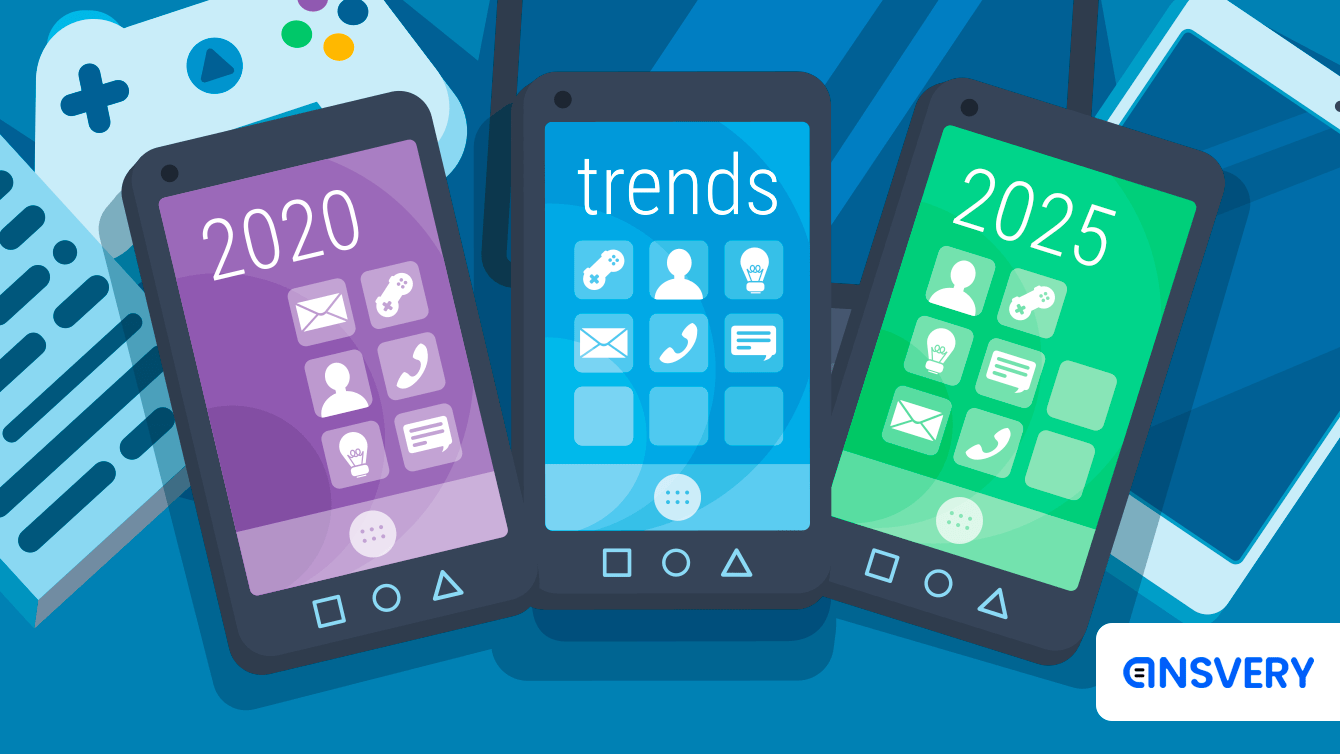Key Support Trends: Learn from the Past & Change the Future
The author of the article, Maria Filippova, is a learning and development specialist in Ansvery. She follows the latest trends in customer communication and introduces the best practices into the workflow to assist her colleagues' personal growth and create a healthy culture of the support/customer interaction.
This time, we will talk about the place support occupies in the general scheme of running a business, describe its functions and impact on profit, ponder on the relationships between support and developers, and share some interesting cases and trade secrets.
It is always fascinating to try and peer into the future, to try and guess what we might expect next. However, if such prognoses are based on facts and data, rather than on guesswork, then it is called strategic planning and it is an essential part of developing a business. After all, why risk missing an important trend and being left behind?
But at the same time, it can be as fascinating to “travel back in time”, to look at past predictions and to check if they have come to pass or if they were wrong entirely. This exercise is not only fun, it helps you calibrate and adjust your understanding of the evolution of the market and make more correct predictions next time.
Sometimes, however, when you start your analysis, you get sidetracked. You look for a particular piece of evidence, but no information exists in a vacuum, without links to a whole field of data. And if you start, say, examining a trend, you may soon realize that it is connected to other trends and together they create a unified data canvas.
I first wanted to find out how views on support channels have changed over a period of 5 years, starting with 2016. So I checked the lists of trends and predictions for each year on various expert blogs. Gradually, I came to realize that other trends on those lists were also forming a kind of pattern. Naturally, I got curious, so I took a sheet of paper and created a combined timeline of opinions and recommendations.
I looked at the development of several Customer Support trends: the understanding of Customer Experience as a whole, Customer Support culture, the number of support channels, their effectiveness and interconnectedness, the role of AI in Customer Support and, finally, the main concepts that could summarize the attitude to the Support, a sort of motto of the year. And when I compared how the evolution of opinions progressed in these different trends, I could see that all the changes over the years have been driven by the same four principles.

Principles of change
1. Reaction
Firstly, all the evolution of the Customer Experience strategy is a result of a chase.
The rate of our life becomes faster and faster, every year we are prepared to wait less and less for an answer to our query. New technological solutions are being created every year and customers adopt these solutions. So in time, people become savvier, more experienced, more demanding. They receive more attention from companies, finer products, better service. They quickly get used to those and expect service providers to do better next time – be faster, more empathetic, more accommodating. And as the demands grow, so does the level of disappointment if those demands are not met. That is why service providers are always trying to catch up with their customers, to react rather than proact, to satisfy the existing needs. Those who can predict the development of the trends correctly and implement the solution before the change comes will be in the winning position indeed, but at the same time, make the game much harder for everybody else.
Read more: Non-paying users: to support or not to support?
2. Data
It isn’t only the demand that drives the change, it is also the vast and ever-growing amount of data. You see at the top of the table there is a cell in the second line marked in deeper grey? It says “Service is data-driven”. And that is the main factor that has been fueling the evolution of business, service, and customer experience for the last five years and that is pushing them still. We’ve started learning information about our customers and now we can never stop. We find out what our customers want from our service and products, then we implement changes to give them what they want. These changes trigger the reaction from the customers and we have to study this reaction to tweak our actions accordingly, so we get more data – and the cycle continues. We are pretty much helpless without our analytics, and the more data we get, the better our decisions are.
3. Personalization
If you collect a lot of information, you might as well make it work. The data companies acquire are used to satisfy their clients making customer-centric policy another common ground for all the trends. The Customer is put center stage. Companies study how their customers use the internet, find them in their favourite messengers or social networks, match their rhythm of life and adapt to their response speed, talk to them in the tone they prefer. Basically, companies use the information they have received to tailor the experience for each of their customers personally.
4. Complexity intensifies
Since businesses are forced to chase after their customers and pump data into their CX strategy, no wonder that its various aspects expand and become more challenging and nuanced.
Just consider the evolution of the views on customer experience as a whole. It has transformed from a mere buzzword into a complicated structure that favours unusual and fresh approaches and can provide a company with a sizable competitive advantage.
Customer service culture has also been directly and dramatically affected by the cumulation of data. In these five years, its definition has shifted from technical maintenance to customer care, then extremely personal interaction, and finally, a dialogue experience that exists within a carefully crafted service atmosphere.
And as these separate aspects expand and evolve, they inevitably intertwine. A product that a company creates is now inseparable from the service the company provides. Both products and services are equal parts of a brand, and branding is tied to customer experience. All the channels you use to interact with your customers are connected to each other and to Artificial Intelligence and infused with the same CX strategy. In the end, it seems that the ideal model of a provider company is a gigantic structure that encompasses every possible aspect of service. And its aim is to ensure a wholesome, comfortable and frictionless experience that covers all stages of a сustomer’s life cycle.
It might look like a holistic dream – а perfect customer-centric concept. And yet, certain trends which have emerged this year indicate that the picture is not ideal and that companies and customers may have some concerns.
Grounds for concerns
It feels like the development of this grand service structure has reached its peak and that it can now only grow in complexity. However, it has been noted during these five years that such a structure may not be easy to sustain. It demands a lot of resources but the returns are not as immediate as businesses would have liked. So budgets tighten and companies are looking for some new technological opportunities that will, perhaps, allow them to extract more efficiency from a less expensive service model.
On the other hand, customers might also think that they are too involved in their relations with businesses. People value not only personalized experience, but also safety and control over their lives. They are aware that companies possess too much of their data. And although customers appreciate when their favourite brands know them and tend to their needs, they are also concerned about brand integrity and information security.
The last row in the table shows us the main concepts that were to define Support each year. But we can also interpret them as what was support lacking the previous year. It seems only logical that when support was shifting from technical maintenance to customer care, it required more effectiveness and much more emotion. When it became more emotional and effective, it needed to provide a more unified experience and proactivity rather than reaction. The next step – naturally – was to make the interaction more convenient to the customers. And when convenience was ensured, the companies could think of how to make their customer experience delightful and unforgettable. And now what the customers want is privacy and trust. They have shared so much information – they want to feel safe. They want companies to make sure that their personal data are going no further.
The Fortune-Telling Bit
So where does this all put us and what can we expect next? Do we dare lift the veil of the nearest future? In this instance, instead of using a crystal ball, we can simply follow the development of the trends and try to work out where it may lead us.
-
Obviously, speed and convenience of interaction will still be high on the customers’ agenda. Their life is very much encompassed in their mobile phones, especially if it is Millennials and Generation Z we are talking about. Funnily enough, they don’t keep a phone to actually talk to people – 75% prefer texting to using their voice. And when they text, they expect a quick reply. When you always have your phone in your hand, it is very tempting to go and check if you’ve had a message – every five minutes. At the same time, the messaging app should be really easy to use, because if you do check it every five minutes and it is clumsy and cumbersome, you will get annoyed pretty quickly.
-
CRM systems will be required to become even more efficient and cost-effective. They will have to be extremely flexible and adaptable to suit the various purposes of different businesses and provide the companies with as much user data as it is legally possible.
-
Data is absolutely necessary to make the correct business decision. For support, it allows us to help customers faster without probing them with additional tiresome questions. However, data anxiety may – and probably will grow even further. So we need to remember that privacy and trust are as much an imperative as continuous information flow.
-
Automation is not a panacea. Certainly, customers are now fully used to AI and various bots. But their existence has only underlined the importance of personalised communication. The logic is simple – bots can sometimes be inadequate, and this is fine. We can’t expect perfect understanding from a bot. But if we are talking to a real person, then we do expect a normal human conversation. By which we usually imply no obvious canned responses and a sympathetic reaction to emotional distress.
-
Customer service agents should be well-trained and prepared to tackle more complicated issues. Modern self-service databases together with AI-bots are quite capable of deflecting simpler queries from the customers. However, they cannot deal with more complicated issues which require flexibility of mind and empathy. It is highly unlikely that robots will ever substitute human agents in solving the issues where customers are in distress and wish not only for a practical solution but also for emotional relief. However, to provide both the solution and the relief, an agent should possess highly developed soft skills. So for a support team to remain in its peak condition and to provide an edge for the company, it needs to be constantly trained.
Now, I grant you, these points do not look like insights into a very distant future – more like observations about the current state of affairs and recommendations on how to act right now. Most of this stuff seems fairly obvious to me anyway, so it looks like I am hardly going to be wrong. Or, perhaps, someone will soon come up with an idea that will change nature – or at least some aspects of the game. Then, perhaps, the chase will start afresh.
P.S. The most delicious part of studying predictions from the past is finding the things people got wrong to an enormous degree. For example, in 2016 someone suggested that there will be no customer support over social media. I only hope no one followed that advice. Oh, wait – it looks like no one did.



